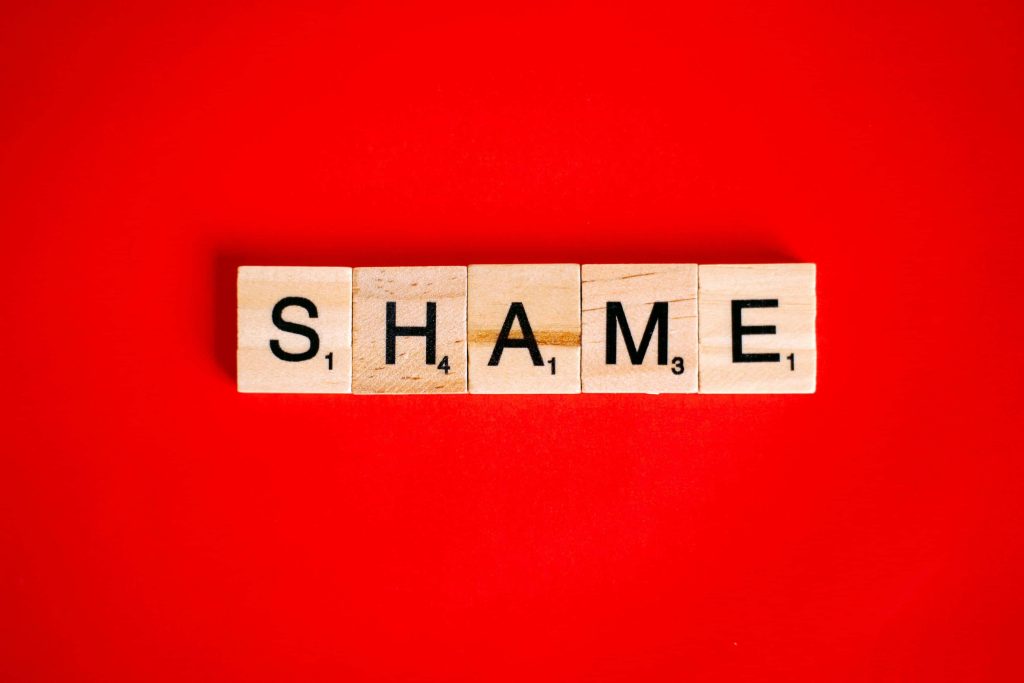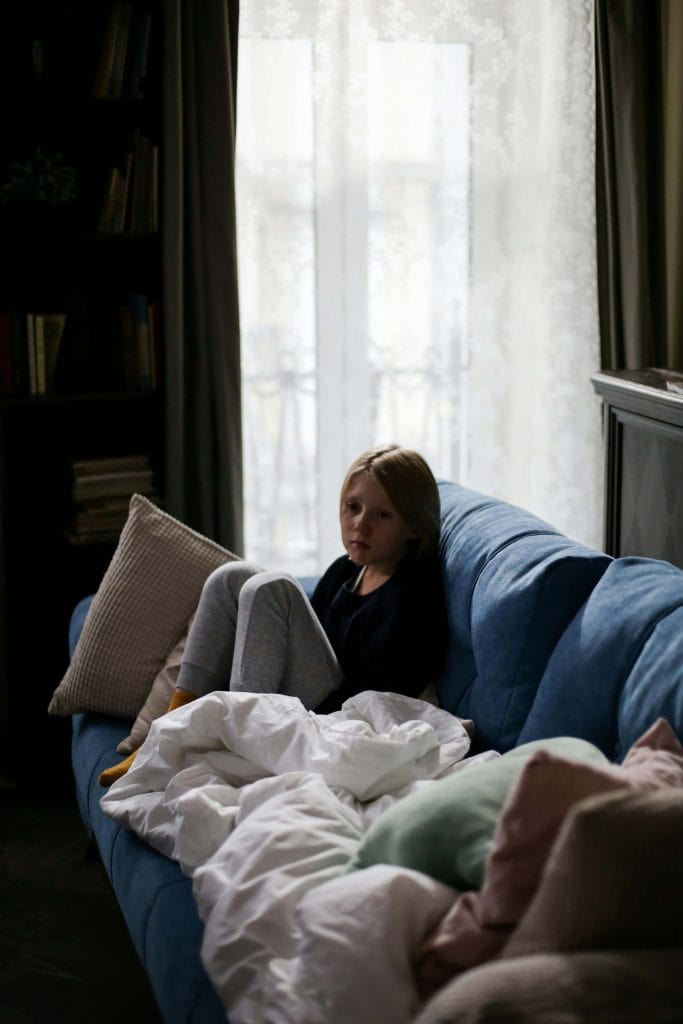The ADHD Shame Spiral: 7 Insightful Ways to Break the Cycle and Rebuild Confidence
If you’re raising a child with ADHD, you’ve likely seen how quickly a small mistake—like forgetting a homework assignment or blurting out in class—can spiral into something much bigger. For kids with ADHD, shame doesn’t just come and go; it lingers, feeding into a cycle of negative self-talk and self-doubt that feels nearly impossible to escape. This cycle, often called the ADHD shame spiral, can leave kids feeling stuck and parents unsure of how to help.
The good news? Understanding the ADHD shame spiral is the first step in breaking it. In this post, we’ll explore why it happens, what triggers it, and how you can guide your child toward resilience and confidence.

What Is the ADHD Shame Spiral and Why Does It Happen?
When ADHD Turns Everyday Challenges Into Overwhelming Shame
ADHD is a neurodevelopmental disorder that impacts behavior and is characterized by struggles with impulse control, sustaining attention, and hyperactivity. If you need a little ADHD education, you can learn more about ADHD symptoms, ADHD diagnosis, the different types (like inattentive adhd), and adhd-like behavior here and here.
If you’re the parent of a child with ADHD, you’re likely familiar with the ups and downs of various aspects of life. But what happens when those downs feel heavier than usual—when they start to linger and spiral into something bigger? That’s the ADHD shame spiral in action, a pattern where small struggles snowball into feelings of overwhelming inadequacy, frustration, and self-doubt. For kids with ADHD, these spirals can feel impossible to escape, and they often leave parents unsure of how to help.
The ADHD shame spiral begins with a challenge like missing an assignment, blurting out an impulsive comment, or losing focus during an important moment. What follows is a cascade of emotions: embarrassment, frustration, and eventually, shame. But unlike disappointment which is usually short-lived, the shame spiral feeds on itself, making kids hyper-aware of their perceived failures and less capable of moving forward.
The Unique Role of ADHD in Shame Spirals
Shame spirals are tough for anyone, but they’re uniquely challenging for kids with ADHD. Their brains are wired differently, which often makes them more sensitive to feelings of rejection or criticism. Unlike feelings of guilt, which focuses on a specific action (“I did something wrong”), shame becomes personal (“I am wrong”). This can lead to quiet the emotional rollercoaster of low self-esteem where kids feeling like they’re inherently flawed, especially when ADHD makes it harder for them to meet expectations at school, at home, or socially.
Understanding the Triggers
What Sets the Shame Spiral in Motion?
The ADHD shame spiral is triggered by moments that highlight a child’s struggles, often in stark contrast to what’s expected of them. These triggers can feel small to an outsider but for kids with ADHD, they can bring on a lot of negative messages and emotions that are hard to shake. Recognizing these triggers is the first step in helping your child break the cycle.
Common Triggers for Children and Teens With ADHD
- Missed Expectations
- Forgetting to turn in homework, even after completing it (sometimes internalized as having poor work habits)
- Struggling to meet deadlines or follow through on commitments
- Social Rejection or Criticism
- Being teased or excluded by peers
- Misinterpreting a neutral comment as negative (a hallmark of rejection sensitivity)
- Impulsive Mistakes
- Interrupting conversations or speaking out of turn
- Acting without thinking and immediately regretting it
- Repeated Corrections or Punishments
- Being scolded by a teacher or parent in front of others
- Facing consequences for behaviors they feel they can’t control
- Feeling “Different”
- Noticing they process things more slowly or differently than peers
- Comparing themselves to siblings or classmates who seem to succeed effortlessly
How ADHD Brains Process Shame
Why It Feels Bigger and Harder for Kids With ADHD

Children with ADHD experience shame in unique ways depending on the situation and the people involved. A study by Fernandes et al. (2014) explored how kids with ADHD process feelings of shame when rules are broken, compared to their peers without ADHD.
The researchers found that while kids with ADHD had a similar understanding of right and wrong, their feelings of shame were more pronounced and varied based on who was involved in the scenario—whether it was a parent, teacher, or peer.
These findings reinforce how deeply shame can take root in kids with ADHD, particularly when they feel they’ve let someone down. It’s not just the rule-breaking itself but the context and relationships that shape how they process the experience.
The Neuroscience of ADHD and Shame
Here’s what’s fascinating (and frustrating) about ADHD: it’s not just about behavior or focus. It’s rooted in brain differences that affect how kids engage in emotion regulation, respond to setbacks, and recover from difficult moments.
- Dopamine: The Motivation Messenger ADHD brains naturally produce less dopamine, the chemical that helps us feel good when we accomplish something. Without enough dopamine, everyday challenges feel a lot bigger. It’s harder for kids to shift from “I messed up” to “How can I fix this?” They get stuck in that emotional quicksand.
- The Prefrontal Cortex: The Brain’s Control Center This part of the brain is like the CEO of emotions and decisions. It helps kids hit the brakes when they’re overwhelmed or reframe a tough moment. In ADHD, the prefrontal cortex develops more slowly, so that “pause button” doesn’t always work as well. Instead of thinking, “That was a mistake, but I’ll do better next time,” kids often get swept up in feelings like frustration or hopelessness.
- Emotional Sensitivity: The Rejection Radar Many kids with ADHD experience something called Rejection Sensitivity Dysphoria, aka RSD, which is an emotional response tied to the way ADHD brains process social interactions. Think of it as having a super-sensitive radar for criticism, even when none was intended. A gentle reminder to clean their room or a neutral look from a friend might feel like rejection, triggering an outsized emotional response that can quickly spiral into shame.

What Shame Feels Like to an ADHD Brain
- Black-and-White Thinking: Kids with ADHD often struggle with nuance, so mistakes feel like proof of failure. Instead of thinking, “I made a mistake today,” they might think, “I’m terrible at this and always will be.” That kind of thinking makes shame stick around longer than it should.
- Emotional Flooding: Imagine trying to navigate a conversation or task while your emotions are in overdrive. For kids with ADHD, shame triggers a flood of feelings—disappointment, frustration, sadness—that overwhelms their ability to think clearly or move forward. This is why they might lash out, shut down, or seem unreachable in those moments.
- Stuck in the Loop: The ADHD brain struggles with transitions. That means once kids enter the shame spiral, it’s incredibly hard for them to shift gears. They’re not just upset about what happened—they’re stuck replaying it, feeling worse with each repetition.
- Body Meets Brain: Shame is emotional and **physical. Kids might slouch, avoid eye contact, or say things like, “I just want to disappear.” Their bodies are telling the same story their brains are: “This is too much for me.”
The Role of Negative Self-Talk and Imposter Syndrome
When Your Inner Critic Becomes Your Loudest Voice
If your child with ADHD seems to be their own worst critic, there’s a reason for that. Negative self-talk—those harsh, internal judgments kids make about themselves—can take root during shame spirals. Over time, not only does it erode positive self-talk, but this inner dialogue shifts from reflecting a passing emotion to shaping their sense of identity and self-worth.
Imposter Syndrome and ADHD
As kids grow older, negative self-talk can take on a new form: imposter syndrome. This feeling convinces kids that any success they experience is unearned or accidental.
For children and teens with ADHD, imposter syndrome might show up like this:
- Downplaying Achievements:
- “I only got a good grade because the test was easy.”
- “That win doesn’t count; it was just luck.”
- Overpreparing or Overworking:
- Teens might spend hours obsessively redoing assignments or preparing for small presentations, convinced they’ll fail without perfection.
- Avoiding Risks:
- Instead of trying something new, kids might hold back, thinking, “If I don’t try, I can’t be a complete failure.”
Kids with ADHD are especially vulnerable to imposter syndrome because their day-to-day struggles like forgetfulness, impulsivity, or difficulty staying focused can lead them to question their abilities, even when they’ve succeeded.
Why These Patterns Matter
Negative self-talk and imposter syndrome create a cycle where kids become increasingly hesitant to take healthy risks or celebrate progress. Over time, this mindset reinforces the shame spiral and leaves kids feeling stuck. This can even lead to numbed-out distraction, social isolation, and in the worst cases, mental health issues.
The encouraging news is that these patterns aren’t permanent. With support and intentional strategies, your child can learn to challenge negative thoughts, recognize their worth, and break free from the cycle of shame.
Breaking the Cycle
How Parents Can Empower Kids to Break Free From the Shame Spiral
The cool thing about breaking out of cycle of shame spiraling is that it can start with something very simple: a shift in perspective. The goal isn’t to eliminate every challenge your child faces, but to guide them in understanding their emotions and the reality of the external world, practicing resilience, and discovering strategies that work for them. Here’s how you can help.
1. Name the Feeling to Tame It
Kids often feel shame without being able to identify or articulate it. When emotions go unnamed, they grow louder and harder to control. Helping your child label their feelings can provide clarity and validation.
2. Challenge Negative Self-Talk
Negative self-talk thrives in the shame spiral. You can help your child recognize and reframe these thoughts by gently questioning their accuracy.
- When your child says, “I always mess everything up,” you might respond with:
- “I know it feels like that right now, but is that really true? Can you think of times when you did something really well?”
- “What’s one thing you’re proud of from today? Let’s focus on that.”

This isn’t about dismissing their feelings but offering a balanced perspective that encourages self-compassion.
3. Teach Rejection Resilience
For kids with ADHD, rejection sensitivity can be a major driver of the shame spiral. Teaching them to handle rejection with resilience can make a world of difference.
- Help your child reframe rejection by focusing on what’s within their control:
- “I know it hurt when your friend didn’t invite you, but that doesn’t mean you’re not a good friend. What can we do together this weekend to make it fun?”
- “It’s okay to feel disappointed about the grade, but I’m proud of how much effort you put in. Let’s think about what might help next time.”
When to Seek Additional Help
Recognizing When Outside Support Is the Right Next Step
Sometimes, no matter how much you validate, reframe, or guide your child, the shame spiral feels like an unbreakable cycle. If the strategies you’re using at home don’t seem to be making a difference, or if the shame spiral starts affecting your child’s overall well-being, it may be time to bring in additional support to go in the direction of an upward spiral.
Signs It’s Time to Seek Help
Every child experiences tough moments, but here are some signs that professional support might be beneficial:
- Persistent feelings of low self-worth that don’t seem to improve, even with encouragement.
- Withdrawal from activities, friends, or family that your child used to enjoy.
- Frequent outbursts, meltdowns, or moments of despair tied to feelings of rejection or shame.
- Signs of anxiety or depression, such as changes in appetite, sleep patterns, or a loss of motivation.
If you notice any of these patterns, reaching out for help doesn’t mean you’ve failed. It’s an act of care that can help your child move forward with the right tools and support.
What Kind of Help Can Make a Difference?
Professional support can provide valuable tools for managing the shame spiral:
- Cognitive Behavioral Therapy (CBT): A therapist trained in ADHD can help your child reframe negative thoughts and develop healthier emotional responses.
- Parent Coaching or Family Therapy: These approaches offer strategies to support your child at home while fostering a positive, resilient family dynamic.
- School-Based Support: Collaborating with teachers or school counselors can create a supportive environment and reduce triggers for shame at school.
Finding the Right Resources
This part of the process starts with talking to the right people. You may consider starting with your pediatrician or a trusted professional to identify next steps. Even if they aren’t the right person, they can probably make a good suggestion or referral for you. You can also explore ADHD-focused organizations like CHADD (Children and Adults with Attention-Deficit/Hyperactivity Disorder) or local mental health clinics that specialize in working with children.
Seeking help isn’t about solving your child’s ADHD—it’s about giving them the tools to thrive, even when challenges arise. With the right support, your child can learn to navigate shame, celebrate their strengths, and approach life with confidence and self-compassion.

Breaking Free from the ADHD Shame Spiral: Empowering Kids to Build Confidence and Resilience
The ADHD shame spiral can feel like a heavy weight for both kids and parents, but it doesn’t have to define your child’s story. By understanding their triggers, challenging negative self-talk, and fostering resilience, you can help your child navigate these emotions and come out stronger. Remember, breaking the ADHD shame spiral isn’t about eliminating challenges—it’s about giving your child the tools and confidence to face them head-on.
If this post resonated with you, my guide, From Diagnosis to Action: Breaking Through the Stuck Phase, offers even more actionable strategies tailored to ADHD-related struggles. Subscribe below to receive it and explore more thoughtful, practical insights for supporting your child.
Subscribe to receive the guide and more thoughtful insights like this post—it’s a resource you’ll want to keep handy.







